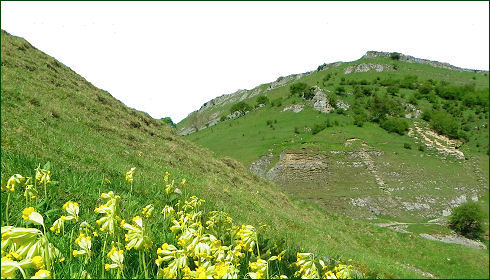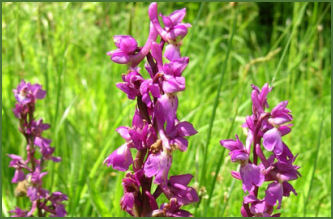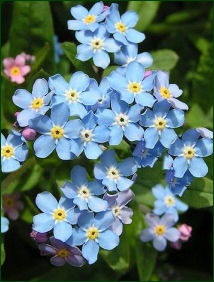Cressbrook Dale
OS grid ref:-
 Beautiful Cressbrook Dale, with its magnificent limestone walls and outcrops, forms part of the Derbyshire Dales National Nature Reserve and is situated in the Peak District National Park. The Derbyshire Dales Nature Reserve represents some of the best examples of wildlife and geology in the White Peak.
Beautiful Cressbrook Dale, with its magnificent limestone walls and outcrops, forms part of the Derbyshire Dales National Nature Reserve and is situated in the Peak District National Park. The Derbyshire Dales Nature Reserve represents some of the best examples of wildlife and geology in the White Peak.
The dale is renowned for its beautiful limestone scenery and wild plants. It can be accessed via a short walk from Litton Village through Tansley Dale.
A prominent feature of Cressbrook Dale is Peter's Stone, an impressive circular limestone dome in the Wardlow Mires at the northern end of the dale. St. Peter's Rock was formed millions of years ago from a landslip, the name Peter Stone probably derived from its similarity with the dome of St Peters Basilica in Rome. It is otherwise known as Gibbet Rock. and was the site of Derbyshire's last gibbeting which took place in 1815.
In the winter a steam flows along the full length of the dale, which feeds ponds of breeding trout used for stocking the River Wye. It disappears from the top end of the dale in the summertime. The name Cressbrook derives from the watercress that was cultivated in the stream during the eighteenth century.
The village of Cressbrook lies at the junction of Cressbrook Dale, where it joins the river Wye and Millers Dale becomes Monsal Dale. The village grew up around a textile mill complex built alongside the River Wye by Richard Arkwright in 1779 and later by his son Richard Awkwright in 1787 after the original mill burnt down.
The flora of Cressbrook Dale

 Springtime brings colourful swathes of early-purple orchids to Cressbrook Dale, (pictured opposite right).
Springtime brings colourful swathes of early-purple orchids to Cressbrook Dale, (pictured opposite right).
The plants dark green leaves have purple black blotches, the flowers are deep pinkish purple verging towards white and it is the first of our native species of orchid to flower each year. In the past, the roots and tubers were sometimes used to make a ’flour’ called salep.
Many colourful wild flowers can be found throughout the dale in the springtime. The attractive pure white flowers of lesser stitchwort, lords-and-ladies, one of our most unusual and conspicuous woodland plants, yellow cowslips, wild garlic, lesser celandine, jacobs ladder, bloody cranesbill, the colourful blue flowers of wood forget-me-not, lily-of-the-valley, water avens, wood anemone, the bright blue flowers of speedwell, wood sedge, cuckoo flower, broad-leaved helleborine, rockrose, dog violets, bird's foot trefoil and many more.
This diverse flora supports many butterflies and moths as well as being home to a wide range of other invertebrates.
